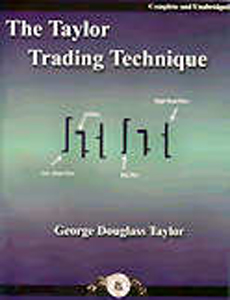Listed Investment Company (LIC)
Further Reading
The listed investment companies or LICs are the ones that are managed by investment professionals who invest in assets like local and international shares as well as in infrastructure assets. LICs have a long history in the Australian market. The Australian Foundation Investment Company (AFIC) is one of the oldest LICs of the country which is about 79 years old. Some other old LICs include Choiseul and Milton and Argo Investments. Currently there are as many as 60 LICs available in the ASX across the Australian shares, international shares, private equity and specialist LICs including the global mining funds.
The basic difference between the LICs and managed funds is that the listed investment companies are listed in the stock exchange while on the other hand the managed funds are not. The mechanism of price movement in case of LIC is just like the ordinary stocks. This means an LIC will see gains in its share price when an investor buys them while on the other hand the price of the shares will drop when investors sell them out.
Advantages of Investing in LICs
The managed funds are increasingly becoming less popular in the Australian market where the investors are now setting their eyes on other investment opportunities like the listed investment companies which are more cost effective. It is to be mentioned that both the listed investment companies and the managed funds share portfolios that are managed by professional fund managers externally.
The LICs can turn out to be quite useful for an investor considering the fact that the LIC can stay along with his other shareholdings (like the shares of BHP Billiton, Rio Tinto and so on) in the same share trading account, making the entire process of monitoring the portfolio a lot easier. On the other hand, dealing with the managed funds can be complicated as you cannot simply buy managed funds from a stock exchange. These funds are needed to be purchased as units from a fund manager and in that case the investor needs to deal with a mix of shares and unlisted managed funds.
The dividends are always fully franked in case of the LICs instead of being partially franked like most of the managed funds. This is why the self-funded retirees find LICs more attractive. The yields typically remain within 3 to 4 percent.
Analysing the Net Tangible Asset (NTA) backing of an LIC
You will often see market experts giving a lot of emphasise on comparing the current market price of an listed investment company with its underlying value, known as the net tangible asset (NTA) backing of the LIC. The LICs may trade at either a discount or premium to their NTA.
Ups and Downs of LICs
However just like any other investment, LICs have ups and downs too where the shares can lose value and the market can come up with the clouds of uncertainty due to various reasons. One of the typical scenarios in case of LICs is that they can be marked as “less lucrative” from the perspective of the investors during times when the share market is booming. In such cases a trader may dump the LICs and go for the direct shares or more aggressive managed funds. New company listings in the stock exchange can also push down the average price of the stocks of an LIC as investors get more interested to utilise the new opportunities.
The main problem that the investors usually face in case of LICs is that it is not easy to determine the right time to invest in these instruments. When an LIC loses favour, the investors quickly refer to the sagging popularity and lagging performance. This is when you will find the LICs being offered at a discounted rate to their NTA. On the other hand, at times when LICs start to gain value and the share price climbs to a premium to their NTA, they are considered expensive. So it can turn out to be quite difficult for an investor to determine what to do. Majority of analysts usually prefers to purchase LICs at a decent discount to the NTA or at a cheaper price. So from that perspective, you may consider the less favourable times as the best times to invest your money on LICs.
Glossary List- How to Trade Forex and Gold Options
- How to Trade the Gold Price and Profit!
- Forex Trading the EUR/USD Pair € EURO and $ US Dollar
- How to Trade Stock Market Indices S&P500
- How to Trade Crude Oil
- Forex Trading Psychology
- What Are Broker Recommendations?
- Free Tickets to Trading & Investing Seminar & Expo ($18) Brisbane 2013
- Stock Calc App
- All About Warrants
- Introduction to Exchange Traded Funds
- Introduction to Exchange Traded Funds: Features
- Introduction to Exchange Traded Funds: Domestic ETFs
- Introduction to Exchange Traded Funds: International ETFs
- Exchange Traded Commodities
- Australian Stock Scan
- Australian Online Share Trading
- List of Trading Books
- Interesting Thoughts about the Australian Dollar
- What's the Meaning of Hawkish?
- Do You Know How To Use the P/E Ratio
- Trading, Religion and Politics - Do They Have Anything in Common?
- Shares that are Volatile that Double and Half in the Short Term
- Telstra (TLS) T3
- Margin Call by E-mail
- The Cost of Holding a Position
- Lack of Disclosure: Compensation from ASX Listed Company
- Unrealistic Returns and Benchmarks
- CMC Markets Down
- Quality versus Quantity Forex Trading
- Woolworths 1H Sales $30.7bn up 3.2%
Date added 31-01-2013 - ASIC Fines CommBank's CommSec
Date added 25-09-2012 - Industry Super Network Calls to Ban High Frequency Trading (HFT)
Date added 22-09-2012 - NAB Launches Online Share Trading Platform
Date added 19-09-2012 - Reserve Bank of Australia Says 23 Countries Holding AUD
Date added 18-09-2012 - Australia Post Digital Mailbox
Date added 10-09-2012 - Winners and Losers of Trading for Week 2
Date added 16-01-2012 - 2012's First Week of the Best and Worst Traded Stocks
Date added 09-01-2012 - 2011's Last Best and Worst Traded Stocks
Date added 05-01-2012 - Best and Worst Pre-Christmas Traded Stocks
Date added 30-12-2011 - Trading Winners and Losers for Dec. 12-16
Date added 19-12-2011 - Best and Worst Traded Stocks for Dec. 5-9
Date added 13-12-2011 - Top 3 Best and Worst Traded Stocks
Date added 05-12-2011 - ASX Glitch Trading Halt
Date added 27-10-2011 - Worst Trade Stocks (and the Best)
Date added 06-08-2011
Top 150 Public Companies Listed on the Australian Stockmarket as at 29/05/2009
- BHP Billiton
- Westpac Banking Corporation (WBC)
- Commonwealth Bank of Australia (CBA)
- National Australia Bank (NAB)
- Telstra (TLS)
- ANZ
- News Corporation (NWS)
- Woolworths Limited(WOW)
- Woodside Petroleum Limited (WPL)
- Rio Tinto
- Westfield Group (WDC)
- Westfarmers Limited (WES)
- QBE Insurance
- CSL
- Newcrest Mining Limited (NCM)
- Origin Energy Limited (ORG)
- Santos Limited (STO)
- AMP Limited (AMP)
- Macquarie Group (MQG)
- Foster’s Group Limited (FGL)




